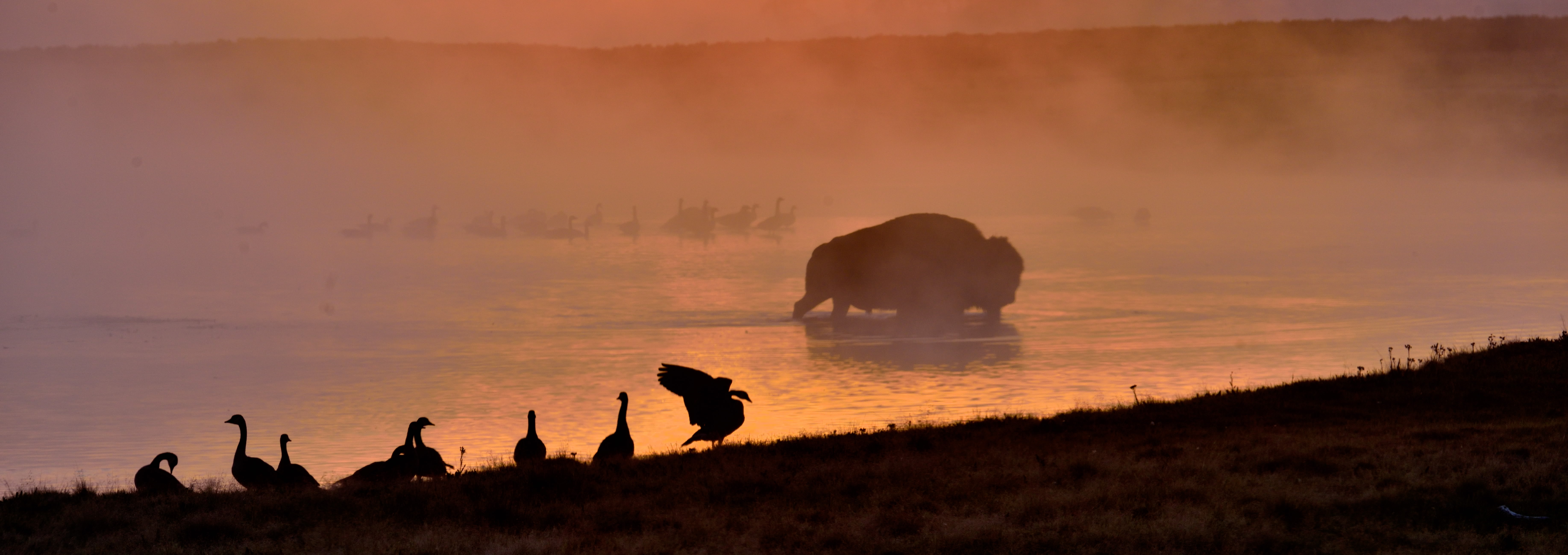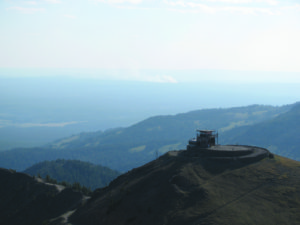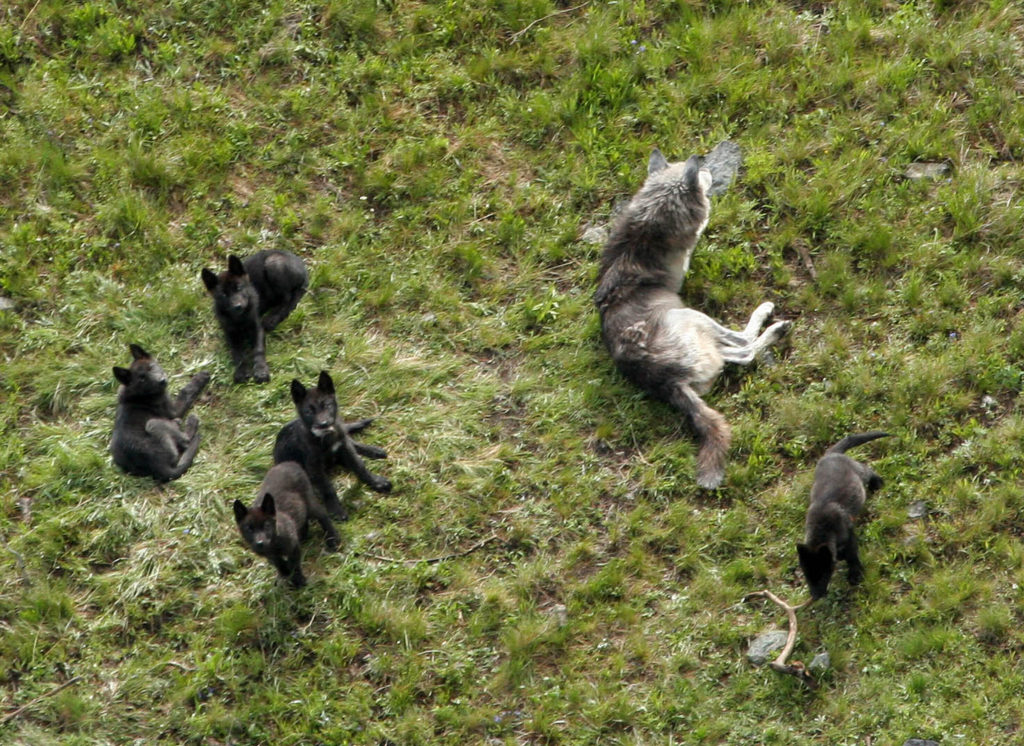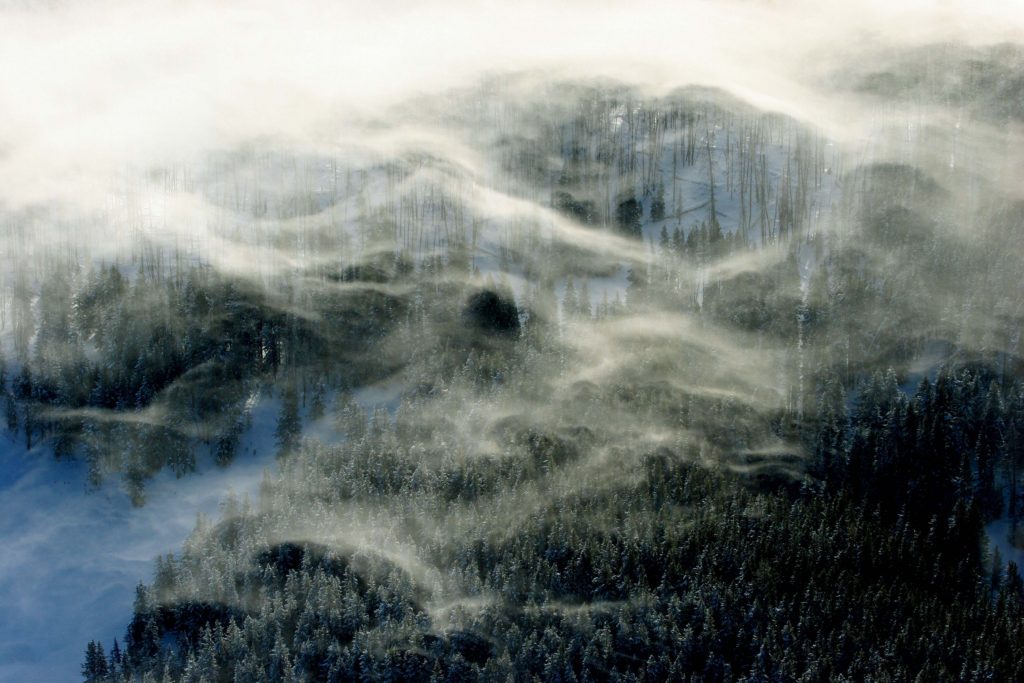Uncategorized
Inside Yellowstone
Published
8 years agoon
Posted By
Outlaw Partners

Help from above
Fire lookouts in Yellowstone
YELLOWSTONE PARK FOUNDATION
At one time there were as many as 10 fire lookout stations staffed each summer in Yellowstone National Park.
Strategically placed on the highest mountaintops throughout the park, they served as the primary method to detect and monitor wildfires. Over the years, that number has been greatly reduced, but the stations—and the people who staff them—still have a critical role to play.


The Cygnet Fire burns in the background of this 2012 photo of Mount Washburn lookout. PHOTO COURTESY OF NATIONAL PARK SERVICE
Currently, there are four fire lookouts in the park: Mount Washburn, Mount Sheridan, Pelican Cone and Mount Holmes. Washburn is the only one inhabited for the full summer season, and the others are used only if there is an active fire in the vicinity to monitor. In an average year, lightning ignites approximately 25 fires and an additional six to 10 are caused by humans.
Yellowstone Fire and Aviation Management Officer John Cataldo explains that it is both a large expense and a potential risk to keep a fire lookout stationed in a remote location, since pack animals and helicopters are needed to drop off supplies.
This expense and risk led to the elimination of some of the park’s lookout stations—such as Purple Mountain and Divide Mountain—and to cease full-time staffing of the others except Washburn. While visitors must hike to reach the summit of Mount Washburn and its 360-degree views of Yellowstone, the peak can be accessed by administrative vehicles.
Aerial monitoring and, more recently, technology like webcams and cell phones, have reduced the need for multiple full-time lookouts. Though aerial monitoring is expensive, the large number of wildlife research-related flights in Yellowstone—such as wolf pack observation flights—serve double duty by helping detect and monitor fires.
Yet Cataldo is quick to point out that fire lookouts still play an important role in wildland fire management.
“Humans observing a fire for an extended period of time can offer more information on the character and behavior of a fire than a webcam or quick flight,” Cataldo said. “They can often see smaller fires or night-time fires first, before a camera would pick them up.”
Lookouts can also help fire personnel quickly investigate a fire that has been called in by a visitor. In many of these cases, the reported fire is actually a “water dog,” a columnar cloud of vapor indicating recent rain that appears above the treetops. In such cases, the fire lookout helps conserve resources by reducing the need for ground response.
Not that the reports by visitors aren’t appreciated.
“We have 3.5 million amateur fire lookouts helping us, and they do a pretty good job. It is rare to have a fire in Yellowstone that isn’t reported immediately,” Cataldo said.
Aerial photos aid park biologists
YELLOWSTONE PARK FOUNDATION
Digital photography has changed the way most of us take pictures when we’re on vacation, and today it is also revolutionizing wildlife research.
Observing wolves, bears and other animals can be challenging because researchers don’t want to get so close that they alter the animals’ natural behavior, and details are difficult to capture with the naked eye. But now Yellowstone is eliminating those challenges with a powerful data collection method.
For the past few years, Yellowstone biologists have been capturing close-up digital photographs of wildlife from an aircraft several hundred feet above the ground. They use high-powered zoom lenses with image stabilizing capabilities, which produce startlingly clear images. Canon U.S.A. helps make these images possible with their Eyes on Yellowstone program.
Aerial images have enabled researchers to identify individual wolves in a pack, determine the presence and number of pups in a litter, and observe strategies packs use to surround and kill prey. This technique has even identified mange affliction in a Yellowstone wolf.
In the process of photographing wildlife, researchers have also taken some pretty stunning images of Yellowstone’s landscape, from an unusual perspective.
Below are a few images park biologists have taken over the years.


Pups from the Druid wolf pack with their mother on a ridge near Cache Creek. PHOTOS BY DANIEL STAHLER/NATIONAL PARK SERVICE
The Outlaw Partners is a creative marketing, media and events company based in Big Sky, Montana.


Upcoming Events
april, 2024
Event Type :
All
All
Arts
Education
Music
Other
Sports
Event Details
Children turning 5 on or before 9/10/2024:
more
Event Details
Children turning 5 on or before
9/10/2024: Kindergarten
enrollment for the 2024-2025 school year can be completed by following the
registration process now.
Children
born on or after September 11, 2019: 4K enrollment is now open for
families that have a 4-year-old they would like to enroll in our program for
the 2023-2024 school year. Please complete the 4K Interest Form to
express your interest. Completing this form does not guarantee enrollment into
the 4K program. Enrollment is capped at twenty 4-year-olds currently
residing within Big Sky School District boundary full time and will be
determined by birth date in calendar order of those born on or after September
11, 2018. Interest form closes on May 30th.
Enrollment now is critical for fall preparations. Thank you!
Time
February 26 (Monday) - April 21 (Sunday)
Event Details
Saturday, March 23rd 6:00-8:00pm We will combine the heart-opening powers of cacao with the transcendental powers of breathwork and sound. Together, these practices will give us the opportunity for a deep
more
Event Details
Saturday, March 23rd 6:00-8:00pm
Time
March 23 (Saturday) 6:00 pm - April 23 (Tuesday) 8:00 pm
Location
Santosha Wellness Center
169 Snowy Mountain Circle
Event Details
We all are familiar with using a limited palette, but do you use one? Do you know how to use a
more
Event Details
We all are familiar with using a limited palette, but do you use one? Do you know how to use a limited palette to create different color combinations? Are you tired of carrying around 15-20 different tubes when you paint plein air? Have you ever wanted to create a certain “mood” in a painting but failed? Do you create a lot of mud? Do you struggle to achieve color harmony? All these problems are addressed in John’s workbook in clear and concise language!
Based on the bestselling “Limited Palatte, Unlimited Color” workbook written by John Pototschnik, the workshop is run by Maggie Shane and Annie McCoy, accomplished landscape (acrylic) and plein air (oil) artists,exhibitors at the Big Sky Artists’ Studio & Gallery and members of the Big Sky Artists Collective.
Each student will receive a copy of “Limited Palette, Unlimited Color” to keep and take home to continue your limited palette journey. We will show you how to use the color wheel and mix your own clean mixtures to successfully create a mood for your paintings.
Each day, we will create a different limited palette color chart and paint a version of a simple landscape using John’s directives. You will then be able to go home and paint more schemes using the book for guidance.
Workshop is open to painters (oil or acrylic) of any level although students must have some basic knowledge of the medium he or she uses. Students will be provided the book ($92 value), color wheel, value scale and canvas papers to complete the daily exercises.
Sundays, April 14, 21 and 28, 2024
Noon until 6PM.
$170.
Time
14 (Sunday) 12:00 pm - 28 (Sunday) 6:00 pm
Event Details
Come join us at Cowboy Coffee as we celebrate a fun night of drinks, games, and meeting others within the community. This event is from 6-8 and all are welcome
Event Details
Come join us at Cowboy Coffee as we celebrate a fun night of drinks, games, and meeting others within the community. This event is from 6-8 and all are welcome to come, if you don’t know who to bring come alone this is a great mixer event! This is an event hosted by Big Sky OUT as we work to provide queer safe spaces throughout the community.
Time
(Sunday) 6:00 pm - 8:00 pm
Location
Cowboy Coffee
25 Town Center Ave. Big Sky, MT 59716












